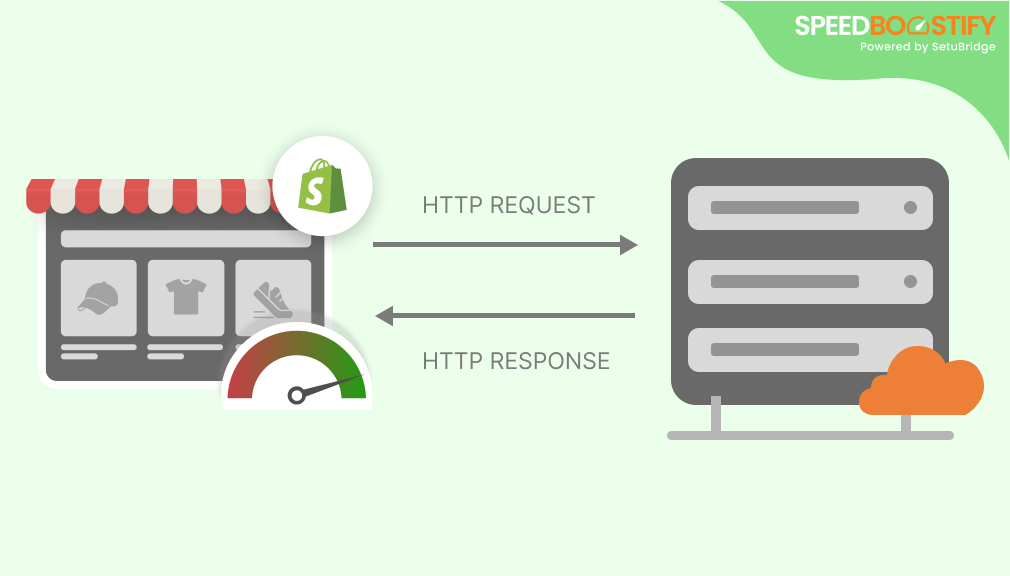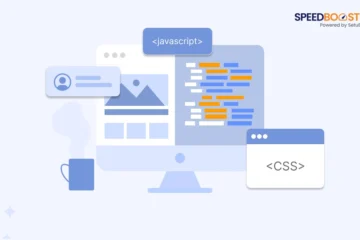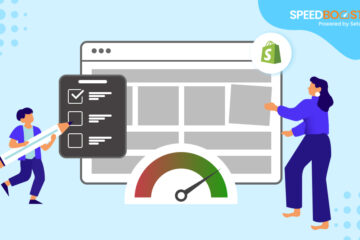In today’s fast-paced digital landscape, having a responsive and efficient website is crucial for success. As an online store owner, you’ve probably come across the term “Page requests in Shopify Store” and might also wonder how it affects your Shopify Store Speed.
In this article, we’ll break down the concept of page requests, explain why fewer requests are better for site speed, and help you find the sweet spot for the number of requests your store should ideally have. So, let’s dive in.
What are Page Requests?
HTTP basically stands for Hypertext transfer protocol, which is the foundation of data communication on the World Wide Web. A page request is a message sent by a browser to a web server when a user wants to retrieve a web page, image stylesheet, script, or any other resource from a website. The server then processes the request and sends back the requested resource to be displayed on the user’s browser.
Why are fewer Page requests better for Site Speed?
Imagine your website is like a buffet, and each page request is a plate of food. The more plates your users have to carry to their table, the longer it takes to enjoy their meals. Similarly, when a user visits your Shopify store, their browser sends multiple page requests to fetch various elements like images, scripts, stylesheets and more.
The browser can only process a limited number of requests simultaneously, and each request introduces a delay due to network communication. Fewer page requests translate to quicker loading times because the browser can fetch and display content more efficiently.
When your site loads faster, it enhances user experience, reduces bounce rates, and even plays a role in search engine ranking. It’s like serving a delicious piping hot meal without making your visitors wait.

How many Page requests is too many?
Now, you might be wondering, how many page requests are considered “Too Many”? Well, there isn’t a one-size-fits-all answer. The ideal number actually depends on the complexity of your Shopify store, the size of your resources and your target audience internet connectivity.
As a general guideline, aim to minimize the number of requests by:
- Combining Files: Merging multiple CSS and Javascript files into a single file each. This reduces the number of requests needed to load these resources.
- Optimizing Images: Use compressed images without compromising quality. Consider using responsive images that adapt to different screen sizes.
- Lazy Loading: Implement lazy loading for images and other non-essential content. This defers the loading of off-screen elements until they come into view.
Page Requests in the Shopify Store
Optimizing HTTP calls for your Shopify store can make a big difference for your online business. If your website takes too long to load, visitors may get frustrated and abandon their shopping carts, which hurts your conversion rate and income.
By optimizing your store’s theme, compressing pictures, and using as few scripts as possible, you can cut down on page requests and make your Shopify store run better overall. Keep in mind that every instant counts when you’re shopping online.
Steps to reduce page requests in the Shopify Store.
Hey there, ever wondered what goes on behind the scenes when you’re shopping online? It all boils down to those tiny but mighty messengers called page requests in Shopify stores. If you’re aiming to skyrocket your eCommerce game, buckle up. We’re diving into a world where every click matters.
From slashing those page requests to jazzing up your website with snappy fonts and images, we’ve got a power-packed lineup of strategies. Get ready to embrace fewer requests, faster loads, and happier customers, Let’s Roll. ?
Understanding Page Requests
Page requests play a crucial role in the swift loading of web content. It is the main way that computer browsers and servers talk to each other. Every element present on a webpage, including images, stylesheets, scripts, along with fonts, necessitates its own request to be sent to the server.
As the number of requests increases, so does the loading duration. Through adeptly enhancing these requests, you have the power to substantially enhance the performance of your Shopify store.
Importance of Fewer Page Request in eCommerce
In the highly competitive world of eCommerce, a delay of just a few seconds can mean the difference between making a sale and losing a customer. Research shows that people who buy things online expect websites to load in less than two seconds.
When too many page requests make a Shopify store take longer to load, potential buyers are more likely to leave their carts and look for faster alternatives. By reducing these calls, you not only improve the user experience, but you also increase the number of conversions.
Minifying CSS and JavaScript Files
CSS and JavaScript files are needed to make websites that look good and let people interact with them. But these files often have white space, notes, and line breaks that aren’t needed. This makes them bigger and takes longer to load.
By taking out these unnecessary parts, files can be sent more quickly and with less data. This process is called ‘Minification’. By using the CSS minification methods, you will be able to cut down on the number of HTTP requests your Shopify store needs to load.
Combining Resources
Each page request causes a certain amount of extra work to be done behind the scenes. You can successfully reduce the total number of requests by combining multiple CSS and JavaScript files into a single request for each of those file types.
This combination makes the loading process more efficient and cuts down on the amount of time users have to wait, which in turn improves the online experience when users visit the website.
Lazy Loading for Images
Images of interesting products are the heart of an eCommerce store, but they can also make pages take longer to load. Lazy loading is a method for loading pictures only when they’re about to be seen by the user.
This means that only the pictures the user can see at first will be loaded, which makes the page load faster at first. As the user scrolls, more pictures are loaded. This spreads out the load and makes it easier to browse.
Reducing Third Party Scripts
Even though third-party scripts can add useful features to your Shopify store, they can also cause more HTTP calls to be made. Check if each third-party script is necessary and if its benefits are worth the speed hit.
By being picky and only adding the most important third-party scripts, you can avoid too many requests and keep your website running quickly.
Streamlining Fonts
Font variety contributes to a store’s aesthetics, but using multiple custom fonts can lead to extra HTTP requests. Opt for web-safe fonts or limit custom font usage to only a few key areas. This minimizes the number of requests required to render your store’s typography, promoting faster load times.
Conclusion
The blog post titled “How to Reduce Page Requests to Speed up Shopify Store” from SpeedBoostify provides strategies to minimize HTTP requests, thereby enhancing the performance of Shopify stores. Below is a table summarizing the key strategies discussed.
| Strategy | Description |
| Optimize Code | Minify and combine CSS and JavaScript files to reduce the number and size of HTTP requests, leading to faster page loads. |
| Eliminate Unnecessary Plugins | Remove or deactivate plugins and apps that are not essential, as each can introduce additional scripts and increase HTTP requests, slowing down the site. |
| Use a Content Delivery Network (CDN) | Implement a CDN to distribute content across multiple servers worldwide, reducing latency and the number of HTTP requests by serving cached content from the nearest server to the user. |
| Leverage Browser Caching | Enable browser caching to store static resources locally on users’ devices, decreasing the need for repeated HTTP requests and improving load times for returning visitors. |
| Apply Lazy Loading for Images | Implement lazy loading to defer the loading of non-essential images and content until they are needed, reducing initial page load time and the number of HTTP requests. |
In the competitive realm of e-commerce, delivering exceptional user experiences is the key to success. By understanding the significance of page requests in a Shopify store’s performance, and by implementing strategies such as minification, resource combining, lazy loading, and selective third-party script integration.
You can dramatically enhance your website’s loading speed and overall user satisfaction. By optimizing your online store for speed and efficiency, you’re not only catering to the expectations of modern shoppers but also laying a solid foundation for higher conversions and sustained growth.


![Revealing the Dark Side of Shopify Speed Optimization[Speed Scam] Dark Side of Shopify](https://www.speedboostify.com/wp-content/uploads/2024/02/Blog-Post-Images-360x240.jpg)

